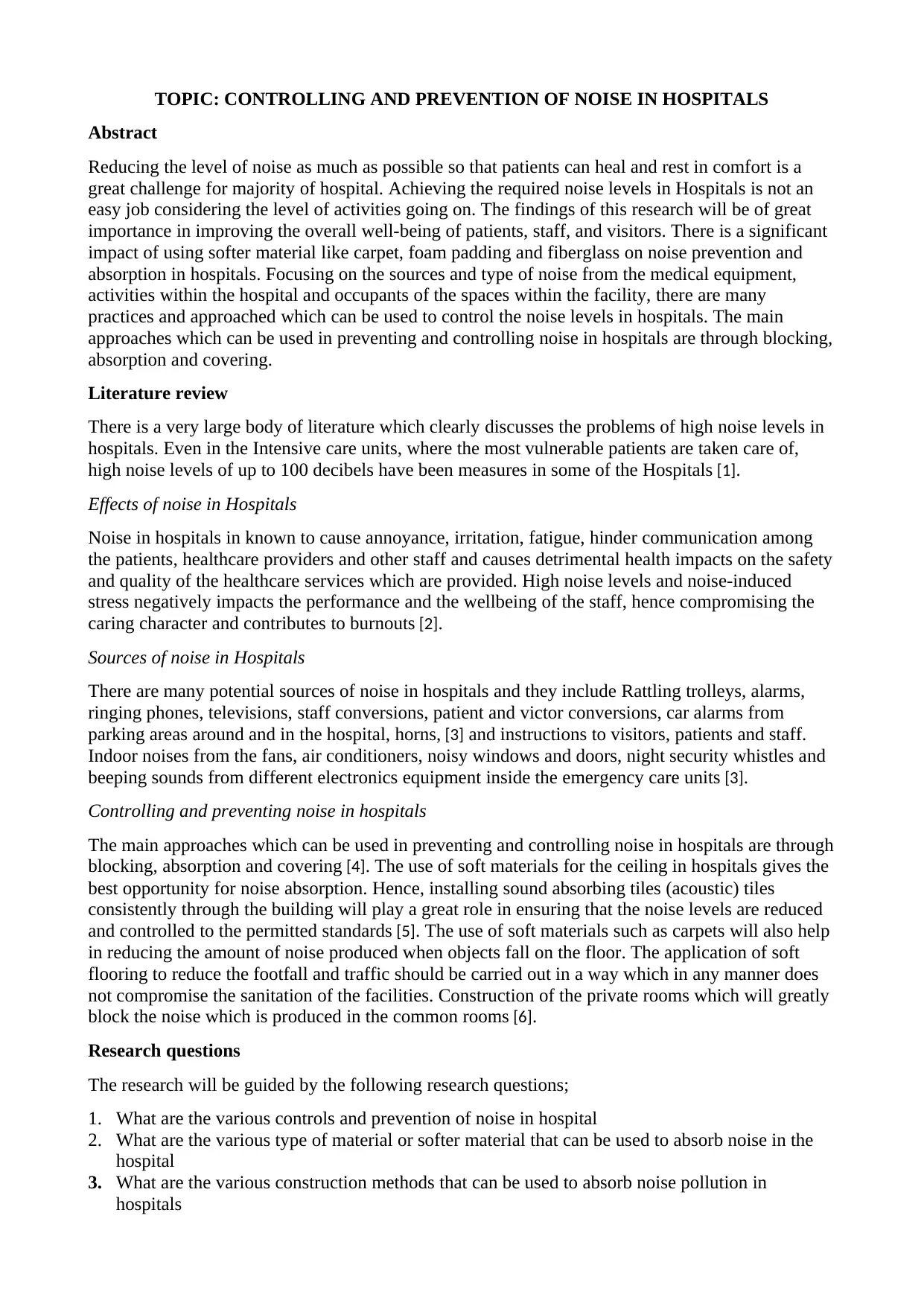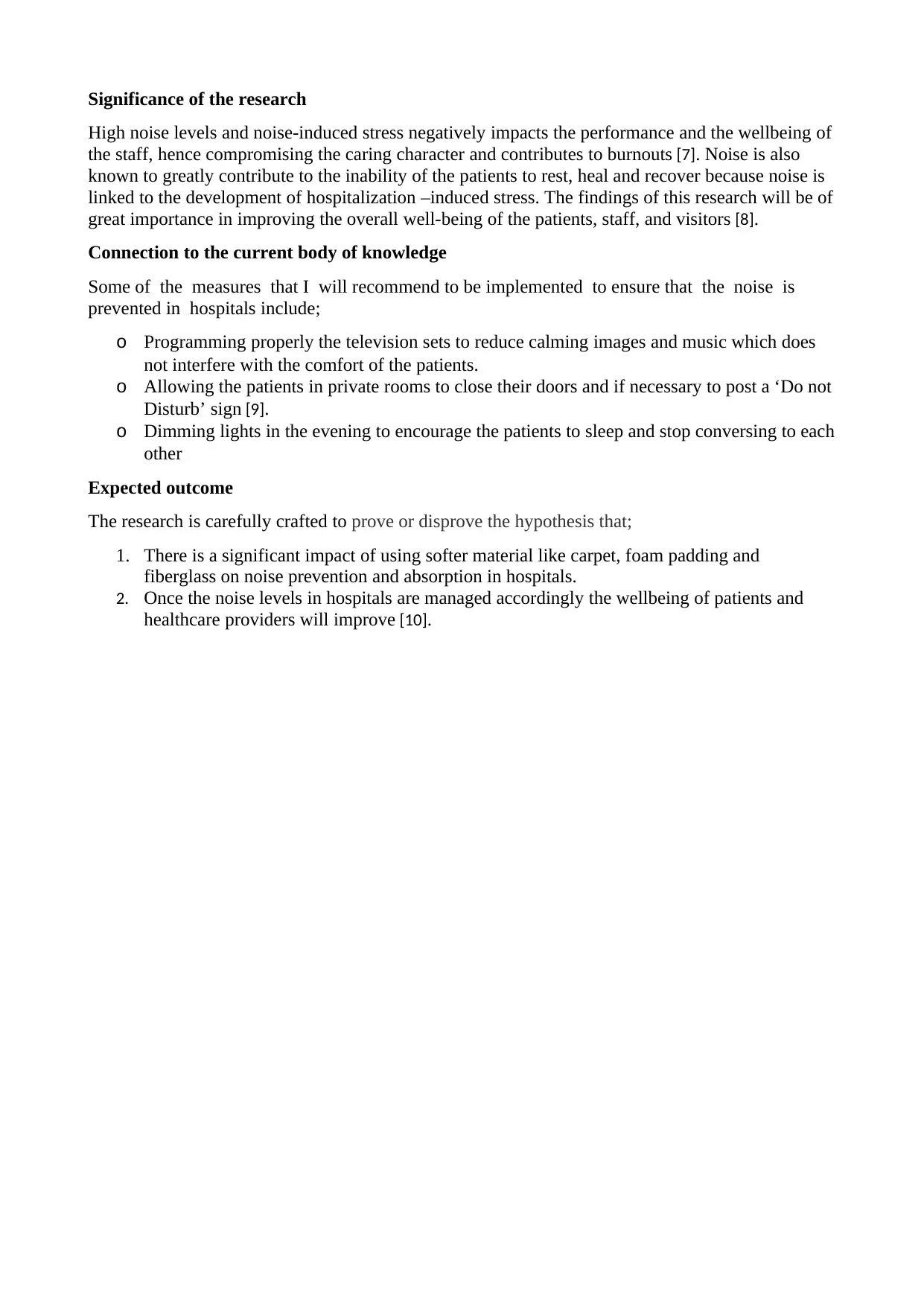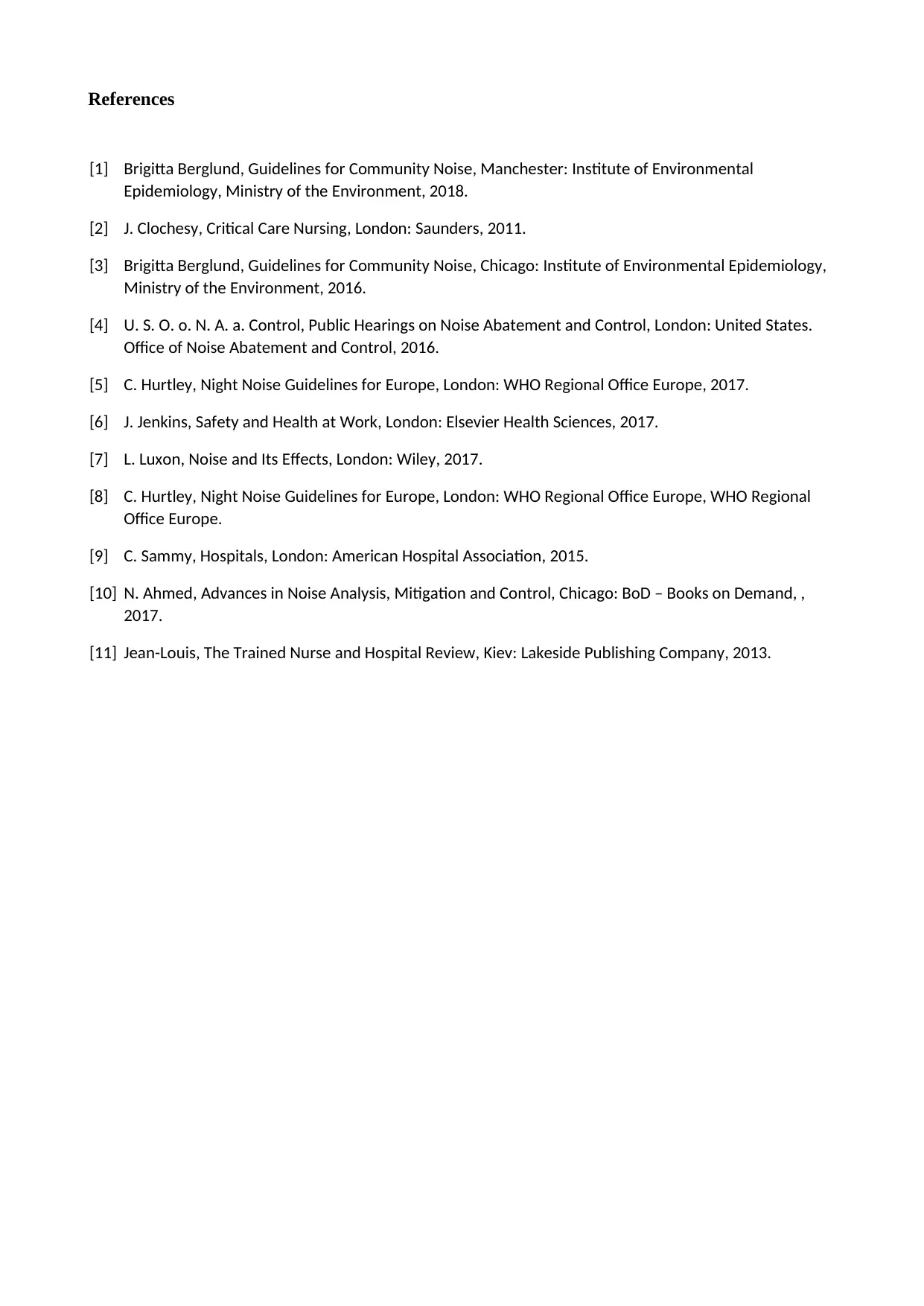EEET2449 - Noise Prevention Strategies in Hospitals: A Research Report
VerifiedAdded on 2023/04/04
|3
|955
|298
Report
AI Summary
This research report investigates methods for controlling and preventing noise in hospitals, addressing the detrimental effects of high noise levels on patients and healthcare staff. It reviews existing literature highlighting the sources of noise, including medical equipment, staff interactions, and external factors. The report focuses on strategies such as blocking, absorption, and covering to mitigate noise, emphasizing the use of soft materials like carpets and acoustic tiles. Research questions explore specific controls, materials, and construction methods for noise absorption. The significance of the research lies in improving patient recovery and staff well-being by reducing noise-induced stress. The report connects to the current body of knowledge by recommending measures like programming television sets and providing private rooms for patients. The expected outcome is to demonstrate the impact of softer materials on noise prevention and the overall improvement in well-being through effective noise management. References to various guidelines and studies support the research.
1 out of 3









![[object Object]](/_next/static/media/star-bottom.7253800d.svg)